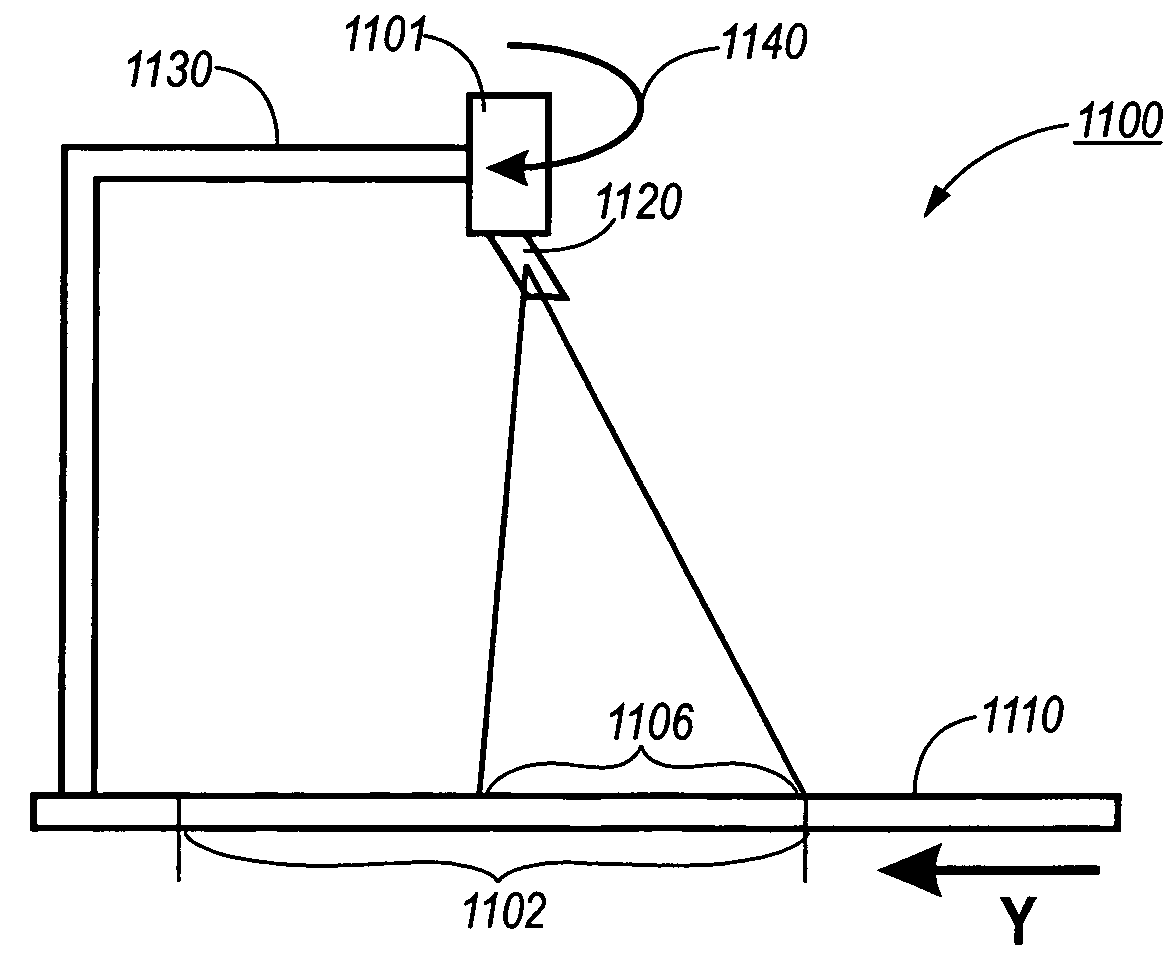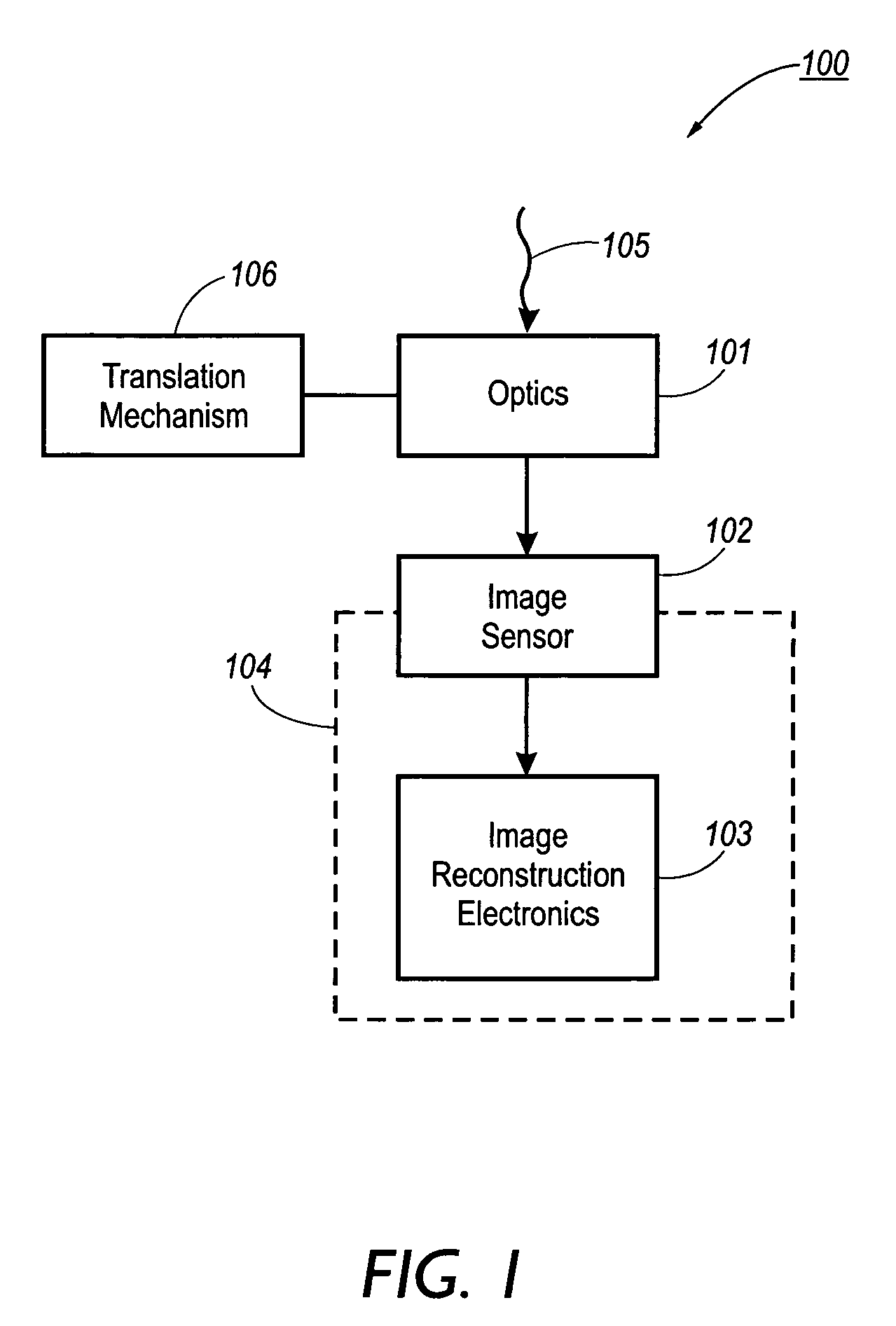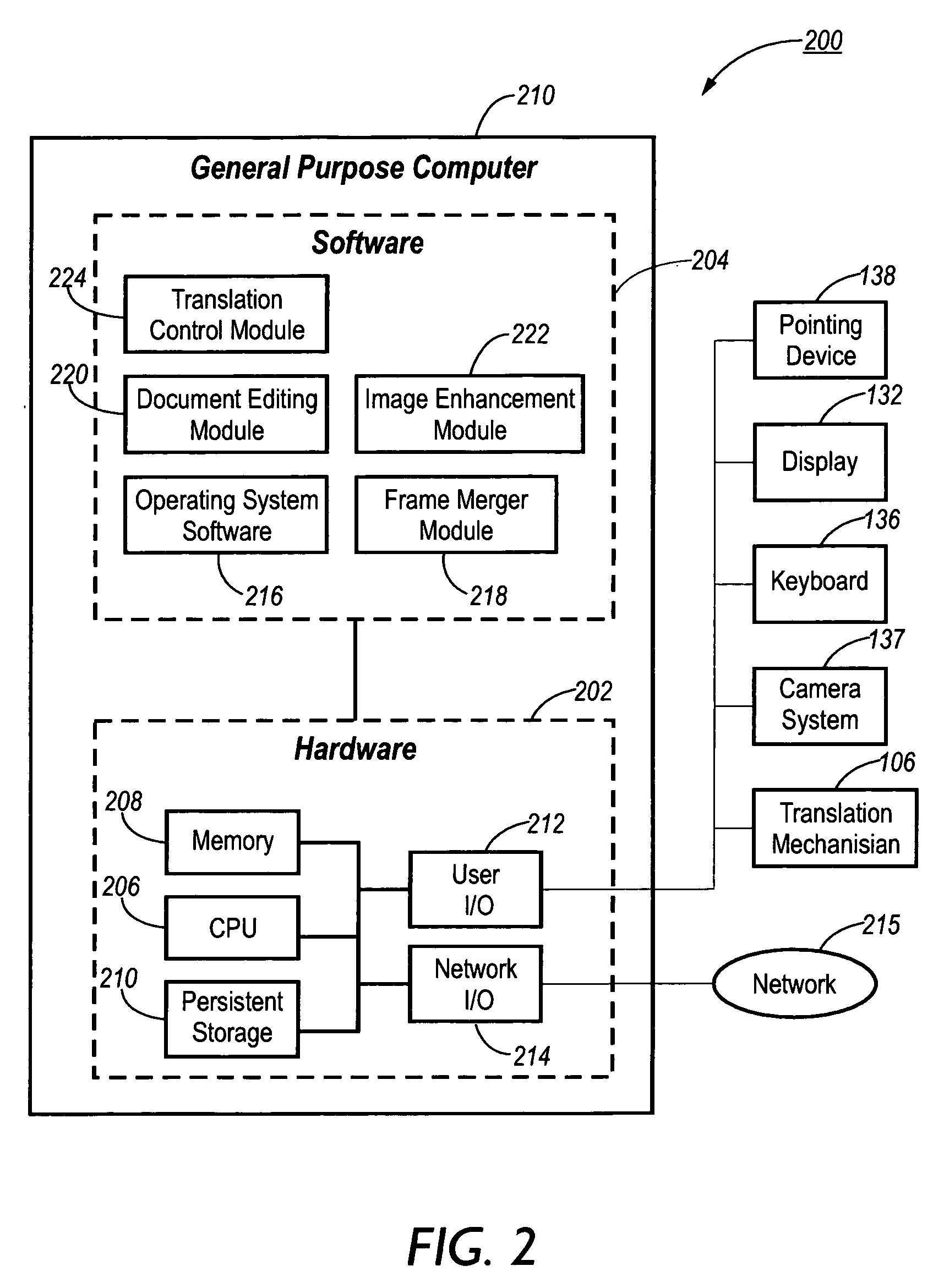Mosaicing images with an offset lens
- Summary
- Abstract
- Description
- Claims
- Application Information
AI Technical Summary
Benefits of technology
Problems solved by technology
Method used
Image
Examples
Embodiment Construction
[0037]A camera can be used to record multiple low resolution images of an object by shifting a camera lens in a plane which is substantially orthogonal to an optical axis of the camera lens and / or substantially parallel to an image sensor of the camera. Each camera image recorded represents a portion of the object. A composite high resolution image of the object suitable for OCR can be obtained by patching together the camera images by using various well known mosaicing, tiling, and / or stitching algorithms. Optical character recognition (OCR) may be performed on the composite high resolution image to translate the bitmap image captured by the camera into computer text with a reliable or acceptable OCR error rate.
[0038]FIG. 1 illustrates a block diagram of a Camera 100 according to one embodiment of the present invention. The camera 100 may be a still or video camera for capturing 2D images or a line-scan camera for capturing scan lines with a 1D sensor. Additionally, Camera 100 may ...
PUM
 Login to View More
Login to View More Abstract
Description
Claims
Application Information
 Login to View More
Login to View More - R&D
- Intellectual Property
- Life Sciences
- Materials
- Tech Scout
- Unparalleled Data Quality
- Higher Quality Content
- 60% Fewer Hallucinations
Browse by: Latest US Patents, China's latest patents, Technical Efficacy Thesaurus, Application Domain, Technology Topic, Popular Technical Reports.
© 2025 PatSnap. All rights reserved.Legal|Privacy policy|Modern Slavery Act Transparency Statement|Sitemap|About US| Contact US: help@patsnap.com



